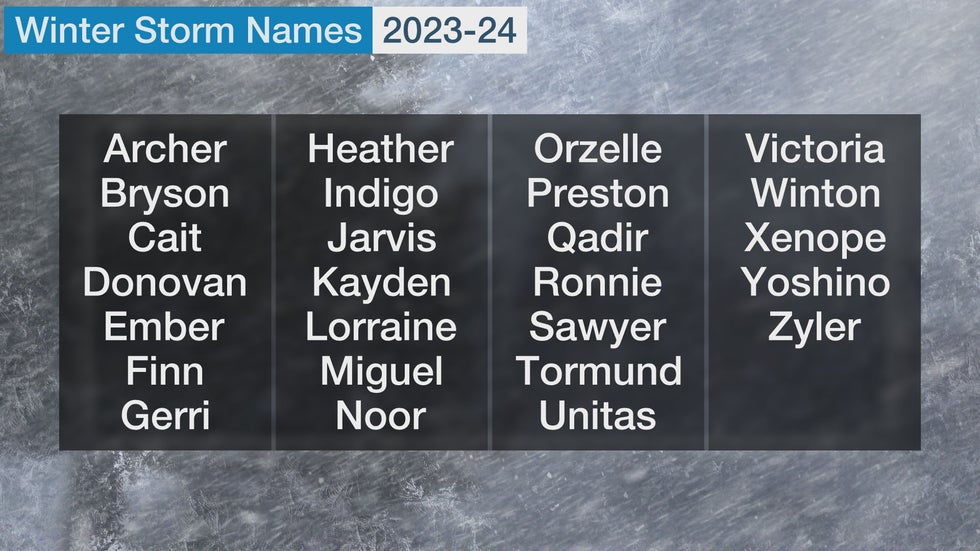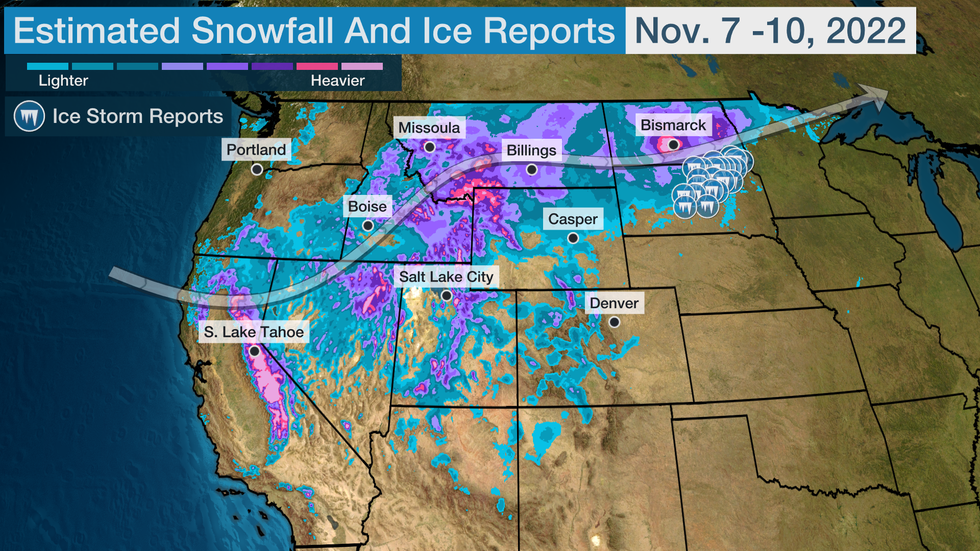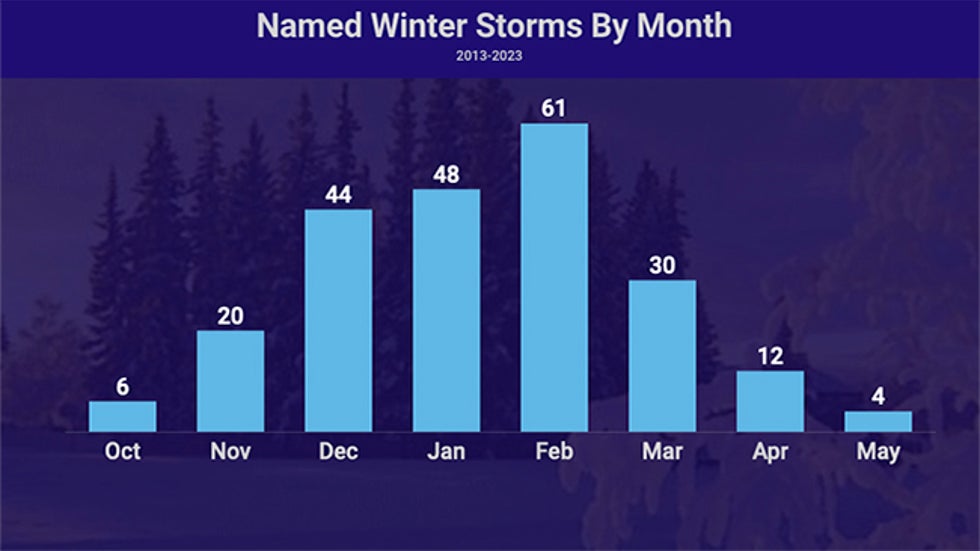Jonathan Erdman
The 2023-24 season is the 12th season The Weather Channel is naming winter storms.
The names you see above will be used in alphabetical order to identify winter storms that meet objective naming criteria based on National Weather Service warnings, or the expectation that a sufficient amount of warnings will eventually be issued.

To be named, a winter storm has to meet, or eventually meet, at least one of the following criteria:
- NWS winter storm, blizzard, or ice storm warnings covering a population of at least 2 million.
- NWS winter storm, blizzard, or ice storm warnings covering at least an area of 400,000 square kilometers, or slightly larger than the state of Montana.
 Estimated snowfall from Winter Storm Alejandra in early-mid November 2022. Circles correspond to reports of freezing rain. The arrow shows the general track of the winter storm.
Estimated snowfall from Winter Storm Alejandra in early-mid November 2022. Circles correspond to reports of freezing rain. The arrow shows the general track of the winter storm.Storms forecast to trigger NWS warnings over a much larger population and/or area, such as February 2021's Winter Storm Uri in the West, South and Northeast, are typically named well ahead of time.
The 2012-13 list for winter storms was the first of its kind to be developed by The Weather Channel.
Here's what we do not name. Lake-effect snowstorms are not named, and any warnings covering lake-effect snow are not counted for consideration for naming a winter storm.
Winter storm names exclude any current Atlantic and eastern Pacific hurricane names on the National Hurricane Center lists for the next six years, and any retired hurricane names (those particularly deadly, destructive and historic).
Using these criteria, the number of named winter storms has been fairly consistent. The named storm tally each season has stayed with a relatively narrow range, from a maximum of 26 storms in 2013-14 to only 19 storms in 2019-20 because of a lack of snow and cold in the Northeast, mid-Atlantic and parts of the Midwest.
There were 22 named winter storms last season, beginning with Alejandra in the second week of November and ending with Vanessa in the first few days of April. That's right about an average season's worth of 22 to 23 named storms from fall through spring.
The first storm has been named as early as October, but November is the most common time. Over the past 11 seasons, the first winter storm has been named as early as the first few days of October to as late as early December 2021. On average, you can expect the first named storm by the second week of November.
Most recently, two named storms formed in October in 2019 and 2020.
In October 2020, Winter Storm Abigail was the heaviest snowstorm so early in the fall in both Minneapolis-St. Paul and St. Cloud, Minnesota. That was followed about a week later by Winter Storm Billy, the earliest ice storm on record in Oklahoma.
The season's final winter storm has been named anywhere from mid-March through mid-May. The 2020-21 season's final storm was the earliest on record after Winter Storm Xylia pummeled the High Plains with feet of snow in mid-March 2021.
February is the peak month. Winter storms have most often reached naming criteria from the latter half of January through February.
The steepest ramp up of storms occurs from November through December, as cold air become more abundant and widespread.
The number of storms falls sharply from February to March as warmer air begins to infiltrate northward, shrinking both area and population susceptible to heavier snow and ice.
 The number of named winter storms, by month, from 2013 through spring 2023.
The number of named winter storms, by month, from 2013 through spring 2023.Jonathan Erdman is a senior meteorologist at weather.com and has been covering national and international weather since 1996. His lifelong love of meteorology began with a close encounter with a tornado as a child in Wisconsin. He studied physics at the University of Wisconsin-Madison, then completed his Master's degree working with dual-polarization radar and lightning data at Colorado State University. Extreme and bizarre weather are his favorite topics. Reach out to him on X (formerly Twitter), Threads and Facebook.
The Weather Company’s primary journalistic mission is to report on breaking weather news, the environment and the importance of science to our lives. This story does not necessarily represent the position of our parent company, IBM.
The Weather Company’s primary journalistic mission is to report on breaking weather news, the environment and the importance of science to our lives. This story does not necessarily represent the position of our parent company, IBM.

No comments:
Post a Comment